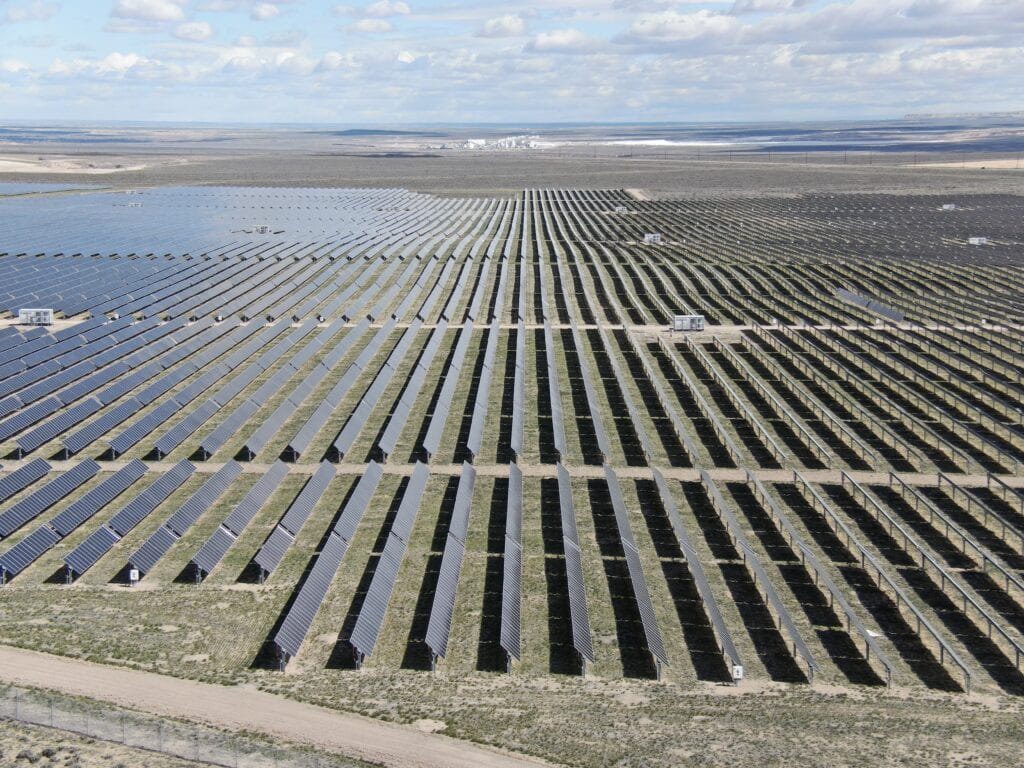Despite lack of threats, utility-scale solar energy still repel pronghorn
Nonmigratory pronghorn avoid big solar facilities in Wyoming, raising critical questions about how renewable energy projects affect habitat use and landscape connectivity for large mammals.
Solar energy is on track to become the largest source of generated electricity globally by 2030. With the push for renewable energy, utility-scale solar energy developments are becoming more common. As part of a collaborative effort with agency and industry partners, scientists at Western EcoSystems Technology (WEST), an environmental and statistical consulting firm, published an initial paper in 2022 in Frontiers in Ecology that showed how impermeable fences at solar sites remove habitat and reduce connectivity for pronghorn. More recently, a follow-up study the team published in Ecological Solutions and Evidence tracked pronghorn (Antilocapra americana) movement over five years following the construction of a utility-scale solar development to evaluate the behavioral response over a longer time frame.
The research team analyzed multiple metrics based on fine-scale GPS collar data to assess changes in pronghorn distribution before and after development. Across every metric, the same pattern emerged. Pronghorn use of the landscape surrounding the solar site was noticeably lower after development.

“We were surprised,” said TWS member Hall Sawyer, a principal biologist at WEST. “Solar fields are relatively quiet and inactive compared to other kinds of development. There’s not a lot of traffic or noise—none of the usual disturbances we associate with wildlife avoidance—but the data in this case are pretty clear.”
Along the perimeter, encounter rates were three times lower after development, and this avoidance extended well beyond the fence line. For example, before development, 10% of all pronghorn locations were found within 0.75 kilometers of the future site. After development, that distance more than doubled, up to 1.75 kilometers. Another metric showed high-use habitat areas near the facility declined by 40-60% within 1 kilometer of the solar array.
These findings suggest the known impacts of habitat loss and reduced connectivity might be exacerbated with avoidance behaviors and highlight the challenges with current mitigation strategies commonly used for utility-scale solar in the West. Most projects employ design-based mitigation, such as movement corridors, which assume that animals will continue to use areas adjacent to or between solar arrays if those areas are left open or divided into smaller units.
“But when we see animals avoiding the facilities altogether, that raises concerns,” Sawyer said. “It really emphasizes the need for post-construction monitoring to see if those mitigation and design features are working as intended.”

The study underscores a broader challenge in the transition to renewable energy: how to meet climate goals without losing critical wildlife habitat. Solar energy has expanded in the western U.S. and many areas overlapping with big game populations.
“It’s a bit of a Catch-22,” Sawyer said. On one hand, the climate crisis is a threat to biodiversity, and on the other hand, renewable projects like solar have large land requirements—the loss of which is also a threat to biodiversity. Once habitat is lost or fragmented, fewer animals can persist on the landscape. The goal with design-based mitigation is to maintain connectivity even if some habitat is lost, but if animals are also avoiding what remains nearby, that makes it even more difficult. Ultimately, Sawyer emphasized that we need to do our best to mitigate and monitor these sites, even if we don’t fully understand how or why animals might respond.
“As biologists, oftentimes, we always want to understand the mechanism: Why, why, why? But in some cases, the ‘why’ doesn’t matter,” Sawyer said. “We know [critical habitat] is important, so we ought to do what we can do—protect it or conserve it.”






